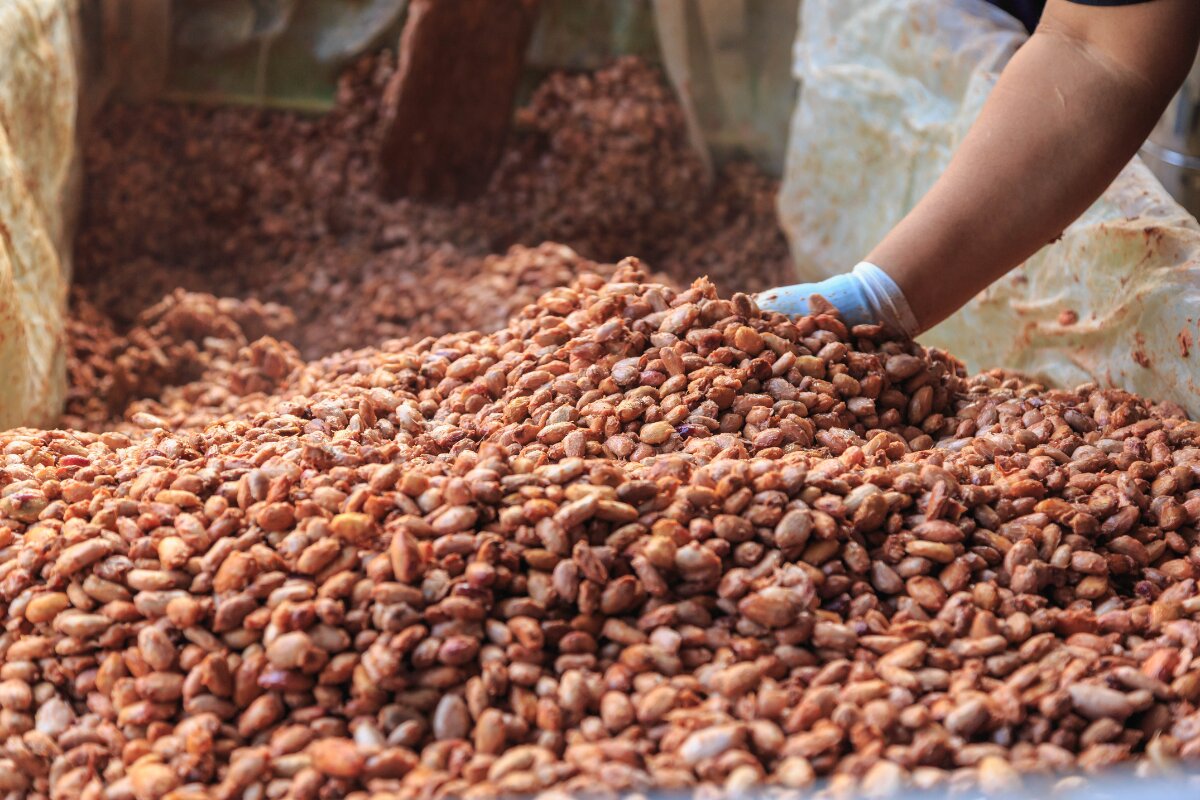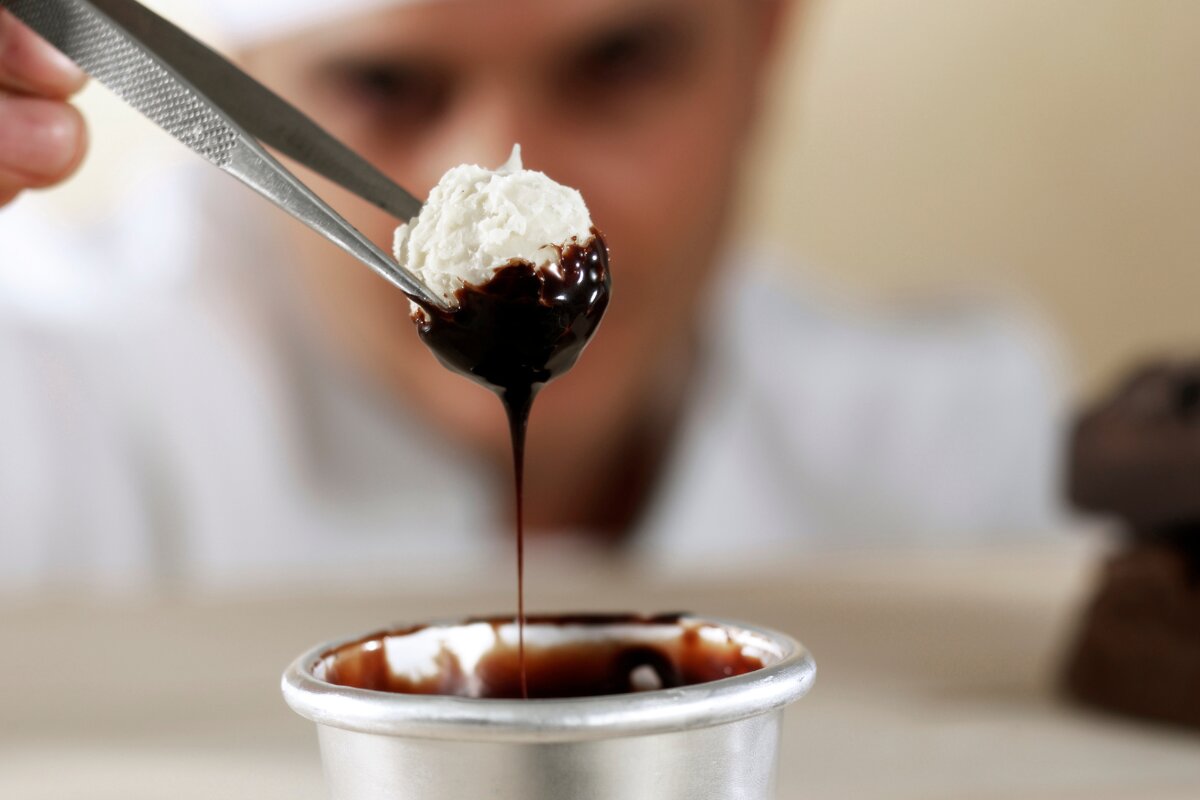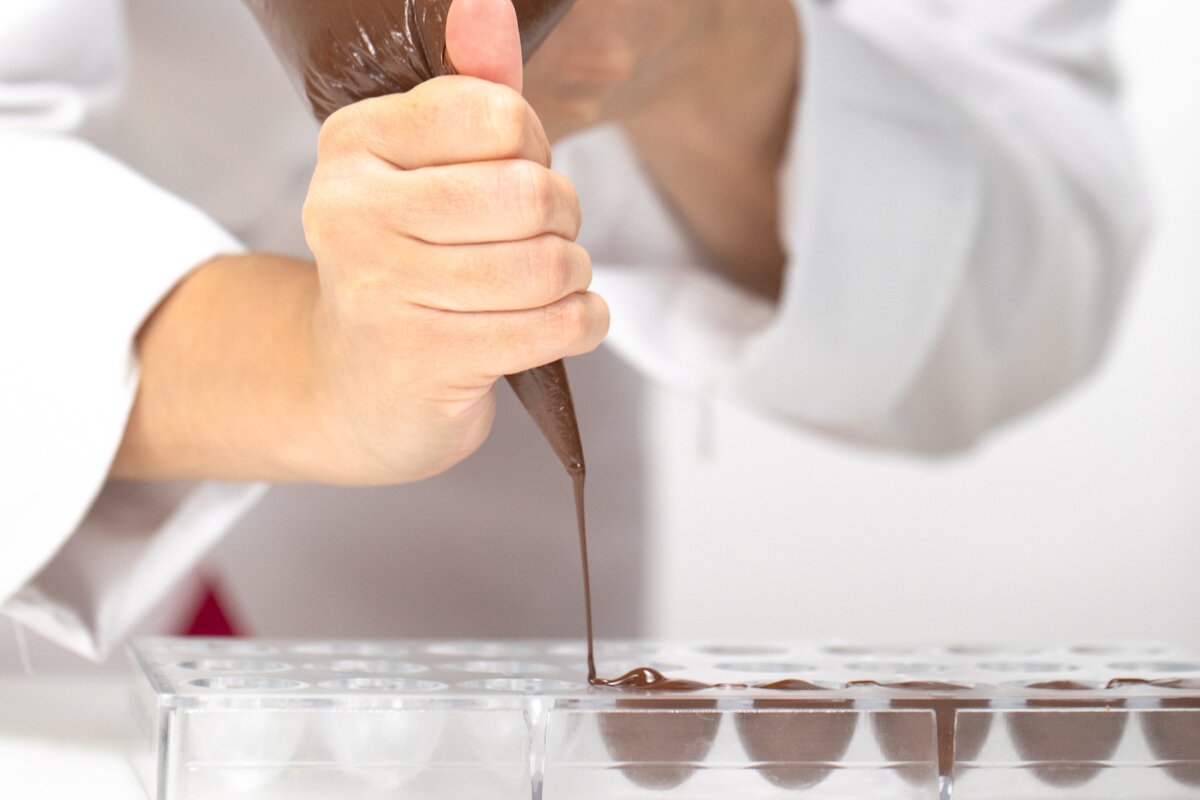One question we often get is about the difference between a chocolate maker and a chocolatier. Often, people use the terms interchangeably. Both work with chocolate, however, there are major differences between the two. Don’t worry! We are here to clarify any confusion and make you sound like a chocolate expert. Keep on reading to learn exactly what each one does.
Chocolatier vs. Chocolate-Maker
Each one begins at a different stage in the chocolate-making process. A chocolate maker is someone, or a business, that buys cocoa beans and grinds them into chocolate. A chocolatier is someone who buys chocolate and creates chocolate confections, such as truffles, bonbons and pralines.
Chocolatiers

Chocolatiers are professional culinary chefs who source chocolate liquor or couverture and use it to make high-quality chocolate confections, such as truffles, bonbons, and pralines. They might even buy chocolate and simply mold it into chocolate bars. However, most often, chocolatiers specialize in creating new recipes with different fillings, flavors, textures, and shapes. These delicious chocolate confections are often beautifully decorated in an effort to create edible works of art.
The chocolate may be delivered in small pieces (such as callets), large blocks or as a liquid delivered by truck. The chocolatier’s work begins by melting the chocolate they have sourced. They must then temper the chocolate before they can start to transform it into their particular chocolate treats.
Chocolate Makers

Chocolate makers purchase the raw ingredients for making chocolate (cocoa beans, cocoa butter, sugar and milk powder) and transform them into ready-to-eat chocolate, typically in the form of chocolate bars. Some chocolate makers, such as craft chocolate makers, source directly from cacao farmers. They often source from multiple origins, each of which can be used to make distinctive-tasting chocolate. Smaller chocolate makers look to create long-term relationships with the farmers by paying above-fair trade prices.
In some cases, they even work with farmers to help them implement new cultivation and fermentation practices to improve yields and quality with the final objective of creating the perfect flavor chocolate.
Once cacao beans have been sourced from the farmer and delivered to the chocolate maker’s factory, the bean-to-bar process is ready to begin. The chocolate maker is responsible for roasting the beans, de-shelling the beans (a process called winnowing), and finally deciding on the recipe to be used. And voilá, chocolate is born!
The bean-to-bar chocolate-making process can be explained in a few key steps:
- The roasting process
- Grinder process
- Refining process
- Conching process
- Tempering process
There are lots of chocolatiers out there, but fewer chocolate-makers since the bean-to-bar process is difficult, expensive, and requires lots of equipment and a high level of knowledge.
For the home chocolate-makers, if it’s too daunting to tackle the full bean-to-bar process, it’s perfectly fine to buy chocolate to create your confections (for example, many professional chocolatiers buy from Valrhona). There are some rare chocolatiers who are also chocolate-makers, but few people attempt to pull together the equipment for making chocolate and develop the expertise to run it all correctly. So most small chocolate shops buy couverture chocolate, which they melt, flavor and use for their chocolate creations.
So there you have it – the difference between chocolatiers and chocolate makers should no longer be a source of confusion. In the end, they are two different art forms that both provide delicious chocolate that we all appreciate and love.
Here are some examples of chocolate makers in the U.S
Here are some examples of chocolatiers in the U.S
Let us know your favorite local Chocolatier or Chocolate Maker on our social media channels. We are @cocoterra_co on Instagram and Pinterest and @cocoterraco on Twitter and Facebook.








